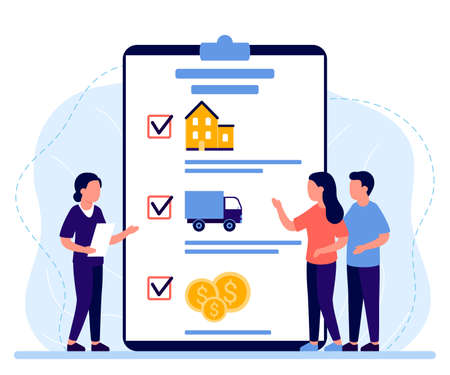Understanding Auto Insurance Basics
If you’re trying to save money on car insurance in the U.S., the first step is to really understand what you’re buying. The two most common types of coverage are liability and full coverage, and knowing the difference can help you decide where to spend and where to save.
What Is Liability Insurance?
Liability insurance is the minimum coverage required by law in most states. It pays for damage or injuries you cause to other people if you’re at fault in an accident. However, it doesn’t cover your own car or your own injuries. This makes liability a budget-friendly option, but also a risky one if you have a newer or more valuable vehicle.
What Does Full Coverage Mean?
Full coverage usually refers to a combination of liability, collision, and comprehensive insurance. Collision covers damage to your own car from an accident, no matter who’s at fault. Comprehensive covers things like theft, vandalism, or weather damage. While full coverage gives you more protection, it also costs more each month.
Why Do These Differences Matter?
In the U.S., these distinctions are important because they directly affect how much you’ll pay out of pocket after an accident and how much you’ll pay in premiums. If your car is older or paid off, you might not need full coverage. But if you rely on your vehicle every day or still owe money on it, full coverage could save you from big expenses later. Understanding these basics helps you balance risk and cost so you can make smarter decisions about your auto insurance.
Assessing Your Personal Risk and Needs
When it comes to saving money on auto insurance, the first step is to honestly evaluate your own situation. There’s no one-size-fits-all answer, especially in the U.S., where your lifestyle and location can make a big difference. By figuring out how your driving habits, car’s value, and even your ZIP code impact your risk level, you’ll be able to choose between liability-only or full coverage in a way that makes sense for both your safety and your wallet.
How Your Driving Habits Affect Insurance
Your insurance premium is partially based on how much—and how safely—you drive. If you have a long commute or drive frequently in heavy traffic, you’re considered a higher risk than someone who only uses their car for weekend errands. Also, if you have any recent accidents or traffic violations, insurers may charge more. On the other hand, safe drivers with clean records often qualify for discounts.
Car Value: Is Full Coverage Worth It?
Another key factor is the value of your vehicle. If you’re driving an older car that isn’t worth much, paying extra for comprehensive and collision coverage might not be cost-effective. Here’s a quick comparison:
| Car Value | Recommended Coverage |
|---|---|
| Less than $2,000 | Liability Only |
| $2,000 – $10,000 | Liability + Optional Comprehensive/Collision |
| Over $10,000/New Car | Full Coverage Recommended |
Location Matters More Than You Think
Your ZIP code plays a surprisingly big role in determining your rates. Urban areas usually have higher premiums because of increased risks like theft and accidents. If you live in a rural area, your rates may be lower, but don’t forget about local weather risks—hail or flooding can also impact what type of coverage you need.
Summary Table: Key Factors Impacting Insurance Costs
| Factor | Impact on Cost |
|---|---|
| Driving Habits & Record | Safe drivers pay less; frequent/high-risk drivers pay more |
| Car Value | Older/lower-value cars need less coverage; new/expensive cars need more |
| Location (ZIP Code) | Cities = higher rates; rural areas = lower rates (usually) |
The bottom line is that taking the time to honestly assess these personal factors will help guide your decision between liability and full coverage—and potentially save you hundreds of dollars each year.
![]()
3. Getting the Right Coverage for Your Budget
Finding the sweet spot between saving money and making sure you’re protected is a big part of getting auto insurance in the U.S. For many of us, especially if you’re new to car ownership or working with a tight budget, choosing between liability and full coverage can feel overwhelming. But don’t worry—there are some straightforward tips you can use to figure out what makes sense for your situation, so you don’t end up paying too much or leaving yourself exposed.
Understand What You’re Required to Have
First off, every state has its own minimum requirements for liability insurance. This covers damage or injury you cause to others but doesn’t pay for your own car repairs. Check your state’s rules—you definitely don’t want to go below the legal minimum, but just meeting the bare minimum may not be enough if you have assets to protect or if an accident could set you back financially.
Consider the Age and Value of Your Car
If your vehicle is older or not worth much, it might not make financial sense to pay extra for full coverage (which includes collision and comprehensive). The cost of this extra coverage can quickly add up—sometimes more than what your car is actually worth. On the other hand, if you have a newer car or a loan on your vehicle, your lender probably requires full coverage until it’s paid off.
Think About Your Personal Risk Tolerance
This part is personal: How much risk are you comfortable taking? If an accident would be a major financial burden and you’d struggle to repair or replace your car on your own, carrying more coverage could give peace of mind. If you have savings set aside and could cover repairs yourself, scaling back coverage could help lower your premium.
Shop Around and Compare Quotes
Different insurance companies weigh risks in different ways, so premiums can vary a lot—even for similar coverage levels. Get quotes from at least three providers before making a decision. Don’t forget to ask about discounts for things like good driving records, bundling policies (like home and auto), or taking a defensive driving course.
Avoid Overpaying or Underinsuring
The goal is balance: enough coverage to protect yourself from big losses, but not so much that you’re paying for unnecessary extras. Review your policy every year—especially after life changes like moving, buying a new car, or adding a driver—to make sure your coverage still fits both your needs and your budget.
4. Shopping Smart: Comparing Quotes and Discount Strategies
If you want to save money on auto insurance while making sure you’re covered, shopping smart is key. There’s no one-size-fits-all policy, and the rates can vary a lot depending on your location, driving history, and even your credit score in many states. Here’s how you can find the best rates, use popular U.S. discounts, and make the most of loyalty or bundle offers.
How to Find the Best Rates
Start by gathering quotes from at least three different insurance providers. You can do this online or by calling local agents. When comparing, make sure you’re looking at policies with similar coverage limits and deductibles. Some insurers might look cheaper upfront but offer less protection or higher out-of-pocket costs if you file a claim.
Comparison Checklist
| Insurance Provider | Liability Coverage Limit | Full Coverage Deductible | Monthly Premium |
|---|---|---|---|
| Provider A | $50,000/$100,000 | $500 | $95 |
| Provider B | $50,000/$100,000 | $1,000 | $85 |
| Provider C | $50,000/$100,000 | $500 | $110 |
This table makes it easy to see not just the price but also what you’re getting for that price.
Take Advantage of Common U.S. Discounts
Many people forget to ask about discounts that could lower their bill. Here are some typical ones offered by most American insurers:
- Good Driver Discount – For those with a clean driving record.
- Multi-Car Discount – If you insure more than one vehicle.
- Good Student Discount – Often available for students with a GPA of 3.0 or higher.
- Low Mileage Discount – If you don’t drive much each year.
- Safe Vehicle Discount – For cars equipped with safety features like airbags and anti-theft devices.
- Pay-in-Full Discount – For paying your entire premium up front instead of monthly.
- Paperless Billing Discount – For choosing online statements and payments.
Loyalty and Bundle Offers: Worth Considering?
If you’ve been with the same company for years, check if they reward loyalty—some insurers offer a discount after three or five years. But don’t assume loyalty always pays off; rates sometimes creep up over time. Also, bundling your auto insurance with homeowners or renters insurance can lead to significant savings—sometimes 10-25%. Always ask for a “multi-policy” quote before deciding.
Quick Tip:
Even if you love your current insurer, it’s good practice to shop around every couple of years. Insurance companies adjust their pricing models regularly based on new risk data, so what was cheapest last year may not be this year.
5. Avoiding Hidden Costs and Common Pitfalls
When you’re trying to save money on auto insurance, it’s easy to get tripped up by hidden costs and common mistakes—especially if you’re a new driver or just learning about car insurance in the U.S. market. Understanding these pitfalls can help you avoid paying more than necessary in the long run.
Mistakes New Drivers Often Make
New drivers are often tempted to buy the cheapest possible policy or skip reading the fine print. While liability-only insurance might seem like a good deal, it may not provide enough protection if you cause an accident, leading to out-of-pocket expenses that could have been avoided with a more balanced plan. Another frequent mistake is forgetting to ask about discounts for safe driving, good grades (for students), or bundling policies. Not taking advantage of these savings can mean missing out on significant reductions in your monthly premium.
Watch Out for Hidden Fees
Some auto insurance providers add extra charges that aren’t obvious at first glance. For example, there might be service fees for setting up monthly payments instead of paying annually, or penalties for late payments that increase over time. Additionally, certain companies charge administrative fees if you make changes to your policy mid-term. Always read the terms carefully and ask your insurer directly about any additional costs before signing up.
How to Avoid Paying More Than You Should
The best way to protect yourself from overpaying is to review your policy regularly—especially when your circumstances change, like moving to a new state or buying a different vehicle. Shop around every year and compare quotes from several insurers; loyalty doesn’t always pay off in this industry, and you might find better rates elsewhere. Lastly, consider raising your deductible only if you’re financially prepared to cover it in case of a claim—this can lower your premium but shouldn’t put you at financial risk if an accident happens.
Takeaway for Smart Shoppers
Being aware of these traps—and taking proactive steps to avoid them—will help you get the coverage you really need without spending more than necessary. Remember: saving money on auto insurance isn’t just about picking the lowest number; it’s about finding the right balance between cost and protection so you don’t end up with expensive surprises down the road.
6. When to Reevaluate Your Insurance Plan
Life never stands still, and neither should your auto insurance policy. As you work on saving money and balancing risk between liability and full coverage, it’s important to know when it’s time to take another look at your plan. Major life changes can have a big impact on your insurance needs—and your rates—so don’t miss the chance to shop around for better deals or more appropriate coverage.
Moving to a New Area
If you’ve moved recently, whether it’s across town or to another state, your insurance rates could change. Insurance companies factor in where you live, including crime rates, population density, and even weather risks. For example, living in a city with higher accident rates might increase your premiums, while moving to a quieter suburb could lower them. After any move, get quotes from several insurers to see if you can find a better rate.
Buying a New Car
Getting a new (or used) car is always exciting, but it’s also a good moment to review your insurance options. Newer cars might need more comprehensive coverage because of their value and repair costs, but safety features or anti-theft devices could qualify you for discounts. Don’t just add your new car to your old policy without checking if there’s a cheaper or more suitable plan out there.
Aging and Changes in Driving Habits
As you get older, your driving habits and needs can change. Maybe you’re commuting less or have become an empty nester. Some insurers offer discounts for mature drivers or people who drive fewer miles each year. If you’ve retired or changed jobs and aren’t on the road as much, update your insurer about your new driving habits—you might be eligible for lower premiums.
Other Life Events Worth Noting
Other situations like getting married, adding a teen driver to your policy, or improving your credit score can also affect your insurance rates. Each of these moments is an opportunity to review both liability and full coverage options to make sure they match your current situation—without paying for protection you no longer need.
Bottom Line: Don’t Set It and Forget It
Your auto insurance should keep up with the changes in your life. Set a reminder to reevaluate your plan at least once a year or whenever something major shifts. Shopping around doesn’t take long, but it could save you hundreds of dollars while ensuring you’re protected at just the right level for where you are in life.
7. Useful Resources and Next Steps
If you’re a new driver or just starting to shop for auto insurance, finding the right information can feel overwhelming. Luckily, there are plenty of reputable resources designed specifically for U.S. drivers who want to save money while balancing liability and full coverage. Here’s a quick roundup to help you take action with confidence:
Trusted Insurance Comparison Tools
- NerdWallet Auto Insurance Comparison Tool: NerdWallet lets you compare quotes from top insurers side-by-side, helping you spot savings whether you need basic liability or are considering full coverage.
- The Zebra: This site is like Kayak for car insurance—enter your info once and get real-time quotes from dozens of providers across the U.S.
- Policygenius: Known for plain-English advice, Policygenius also offers an easy-to-use comparison tool tailored for people who aren’t insurance experts.
Official Government and Consumer Advice
- National Association of Insurance Commissioners (NAIC): Their consumer section explains insurance basics and state-by-state requirements, so you know exactly what’s legally required in your area.
- USA.gov: The auto insurance page walks you through shopping tips, understanding your policy, and what to do after an accident.
- Your State Department of Insurance: Most states have their own websites with guides to local laws, complaints procedures, and approved insurers. Just Google “[Your State] Department of Insurance” to find yours.
Learning from Real Drivers
- Reddit r/Insurance: This community is full of real people sharing their experiences—great for getting honest feedback about different companies and coverage options.
- YouTube Channels Like Dave Ramsey or The Financial Diet: These channels break down complex topics into beginner-friendly advice, especially when it comes to deciding between liability and full coverage.
Your Next Steps as a New Driver
Now that you have these resources, it’s time to put them to use! Start by researching your state’s minimum coverage requirements. Then, use comparison tools to gather quotes and see how much adding or removing coverages affects your premium. Don’t forget to read reviews and check each insurer’s complaint record with the NAIC before making a final choice. Remember—balancing risk is personal, so take your time, ask questions, and choose what fits both your budget and peace of mind as you hit the road!


